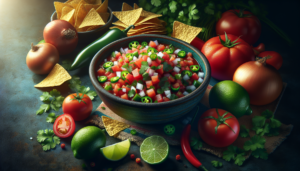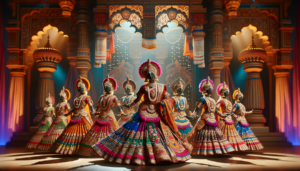Introduction to Swing Dance
Swing dance is a lively and energetic style of social dance that originated in the 1920s. It is known for its fast-paced music, improvisational moves, and the joy and connection between dance partners. Swing dance has experienced a resurgence in popularity in recent years, with people of all ages and backgrounds discovering the thrill of this timeless dance form.
What is Swing Dance?
At its core, swing dance is a partner dance characterized by energetic movements, spins, and turns. It is typically danced to big band music from the 1930s and 1940s, as well as modern swing music. Swing dance emphasizes improvisation and individual expression, allowing each dancer to bring their own personality and flair to the dance floor.
Swing dance is not a single dance style, but rather an umbrella term that encompasses various swing-era dances. Some of the most popular swing dance styles include Lindy Hop, East Coast Swing, Jive, and Balboa. Each style has its own unique characteristics and techniques, but they all share the common elements of swing music and partner connection.
History of Swing Dance
The origins of swing dance can be traced back to the late 1920s in Harlem, New York. During this time, African American communities were developing new dances that blended European partner dancing with African rhythms and movements. One of these dances was the Lindy Hop, which is considered the original swing dance.
As swing music gained popularity in the 1930s and 1940s, so did swing dancing. Dance halls and ballrooms across the United States were filled with young people eager to learn and show off the latest swing dance moves. Famous dancers like Frankie Manning and Norma Miller helped to popularize and spread swing dance through their performances and teachings.
After a decline in popularity in the 1950s and 1960s, swing dance experienced a revival in the 1980s and 1990s. Today, swing dance communities can be found all over the world, with dancers of all skill levels coming together to enjoy this timeless and joyful dance form.
Popular Swing Dance Styles
Lindy Hop
Lindy Hop is the original swing dance and remains one of the most popular styles today. It originated in Harlem, New York in 1927 and is characterized by its energetic and bouncy movements. Lindy Hop is a partner dance that relies heavily on improvisation and musicality.
The basic step of Lindy Hop is an 8-count pattern that consists of a rock step, two triple steps, and another rock step. However, the real excitement of Lindy Hop comes from the endless variations and embellishments that dancers can add to this basic structure. Spins, kicks, and aerial moves are all common elements of Lindy Hop.
East Coast Swing
East Coast Swing is a simplified version of Lindy Hop that emerged in the 1940s. It is characterized by its smooth and fluid movements and is often danced to slower tempo swing music. East Coast Swing is a popular choice for beginners, as it has a simpler basic step and fewer complex variations than Lindy Hop.
The basic step of East Coast Swing is a 6-count pattern that consists of a rock step, triple step, and another triple step. Dancers can add turns, spins, and other variations to this basic pattern to create a more dynamic and expressive dance.
Other Swing Dance Styles
While Lindy Hop and East Coast Swing are two of the most well-known swing dance styles, there are many other styles that fall under the swing dance umbrella. These include:
- Jive: A fast-paced and energetic dance that originated in the United States in the 1930s.
- Rock and Roll: A dynamic partner dance that is known for its acrobatic moves and lifts.
- Charleston: A solo dance that originated in the 1920s and is characterized by its fast-paced, syncopated footwork.
- Balboa: A close-embrace dance that is known for its fast footwork and subtle lead-follow connection.
- Collegiate Shag: A playful dance that features a lot of kicking and twisting movements.
- West Coast Swing: A slotted dance that evolved from Lindy Hop and is known for its smooth and sensual style.
Each of these swing dance styles has its own unique flavor and techniques, but they all share the common elements of connection, improvisation, and joy.
Getting Started with Swing Dance
Finding Swing Dance Classes
One of the best ways to get started with swing dance is to take a class or workshop. Many cities have local swing dance communities that offer regular classes for beginners and experienced dancers alike. These classes are a great way to learn the basic steps and techniques of swing dance in a supportive and social environment.
When looking for swing dance classes, consider factors such as the style of swing dance being taught, the experience level of the instructors, and the location and schedule of the classes. Some popular places to find swing dance classes include:
- Dance studios and ballrooms
- Community centers and recreation departments
- Colleges and universities
- Private instructors and dance schools
Many swing dance communities also host social dances and practicas, which are informal gatherings where dancers of all levels can come together to practice their moves and meet other dancers. These events are a great way to supplement your class learning and get more experience dancing with a variety of partners.
Online Swing Dance Tutorials
In addition to in-person classes, there are also many online resources available for learning swing dance. YouTube tutorials, instructional videos, and virtual workshops can be a great way to learn the basics of swing dance from the comfort of your own home.
Some popular online swing dance resources include:
- Swing Dance Tutorials on YouTube (e.g. “How to Swing Dance for Beginners” by Passion4dancing)
- Online swing dance courses and workshops (e.g. Swing Dance Online, iLindy)
- Virtual private lessons with experienced instructors
While online tutorials can be a helpful supplement to in-person learning, it’s important to remember that partner dancing is best learned through hands-on experience and feedback. Use online resources to build your foundational knowledge, but be sure to also seek out opportunities to practice with other dancers and get real-time feedback from instructors.
Basic Swing Dance Moves
Once you’ve found a class or tutorial to get started with, it’s time to dive into learning the basic moves of swing dance. While the specific steps and techniques may vary depending on the style of swing dance you are learning, there are some common elements that are found across most styles.
Some of the basic moves you can expect to learn as a beginner swing dancer include:
- Rock Step: A foundational step that involves shifting your weight back and forth between your feet.
- Triple Step: A quick step pattern that involves taking three steps in two beats of music.
- Tuck Turn: A simple partnered turn that involves the follower turning under the lead’s arm.
- Inside Turn: Another common partnered turn that involves the follower turning towards the lead.
- Charleston: A bouncy step that involves kicking your feet out and crossing them in front of each other.
As you progress in your swing dance journey, you’ll learn how to combine these basic moves into more complex patterns and variations. Remember to start slow, focus on your technique and connection with your partner, and most importantly – have fun!
Advanced Swing Dance Techniques
Improvisation in Swing Dance
One of the joys of swing dance is the element of improvisation and creativity. While you may learn set patterns and moves in class, the real magic happens when you start to play with the music and express your own style on the dance floor.
Improvisation in swing dance involves listening to the music, responding to your partner’s cues, and adding your own flair and personality to the basic steps. This can mean adding extra spins and turns, playing with rhythms and syncopations, or even coming up with entirely new moves on the spot.
To develop your improvisation skills, try the following tips:
- Listen actively to the music. Pay attention to the rhythms, melody, and accents in the song, and let your dancing reflect what you hear.
- Take inspiration from your partner. Notice what your partner is doing and try to build off their energy and movements.
- Experiment and take risks. Don’t be afraid to try something new or unconventional. Some of the most exciting swing dance moments come from unexpected choices.
- Focus on musicality over complexity. Remember that improvisation is about expressing the music, not just executing impressive moves. Sometimes simple is best.
Above all, remember that improvisation is a skill that takes time and practice to develop. Don’t worry about “messing up” or looking foolish – everyone starts somewhere, and the swing dance community is known for its welcoming and encouraging attitude.
Partnering Techniques
At its core, swing dancing is a partnered dance. This means that in addition to learning your own steps and technique, you must also develop your partnering skills and connection with your dance partner.
In swing dancing, there are two main roles: the lead and the follow. The lead is responsible for guiding the overall movement and direction of the dance, while the follow responds to the lead’s cues and adds their own style and flair. However, both partners are equally responsible for the connection and success of the dance.
Some key partnering techniques to focus on include:
- Frame: Maintaining a stable but flexible upper body that allows for clear communication between partners.
- Connection: Using your body, not just your arms, to transmit lead and follow cues. Focus on maintaining a constant sense of “tone” or engagement in your connection.
- Floorcraft: Being aware of your surroundings and other dancers on the floor, and adjusting your dancing to avoid collisions and maintain a safe and respectful dance space.
- Nonverbal communication: Developing an unspoken language with your partner through things like eye contact, breath, and micro-movements.
Like improvisation, partnering is a skill that takes time and practice to develop. Focus on building trust and communication with your partners, and don’t be afraid to have conversations and give feedback to help each other grow.
Swing Dance Community and Events
Local Swing Dance Communities
One of the best things about swing dancing is the vibrant and welcoming community that comes with it. No matter where you live, chances are there is a local swing dance community nearby that hosts classes, social dances, and other events.
Getting involved in your local swing dance community is a great way to meet new people, make friends, and immerse yourself in the joy and excitement of swing dancing. Most communities are very welcoming to newcomers and are happy to help you get connected and involved.
Some ways to get plugged into your local swing dance community include:
- Attending local social dances and events
- Joining a performance team or practice group
- Volunteering at events or in community leadership roles
- Connecting with dancers on social media or online forums
Many swing dance communities also host larger events and workshops that bring in instructors and dancers from other areas. These events are a great way to expand your horizons and experience different styles and perspectives within the swing dance world.
Swing Dance Festivals
For an even bigger swing dance experience, consider attending a swing dance festival or exchange. These multi-day events bring together dancers from all over the world for a weekend of classes, social dancing, competitions, and performances.
Some notable swing dance festivals include:
- Herräng Dance Camp in Sweden, the largest and oldest swing dance festival in the world
- Lindy Focus in North Carolina, a popular New Year’s festival with top-notch instruction and live music
- Barcelona Lindy Exchange in Spain, which brings together dancers from all over Europe and beyond
- Swing Diego in California, a fun and friendly festival known for its warm West Coast vibe
At a swing dance festival, you can expect to take classes from world-renowned instructors, dance to live bands and DJs, participate in contests and showcases, and socialize with hundreds or even thousands of other passionate swing dancers. Festivals are an amazing way to immerse yourself in the global swing dance community and take your dancing to the next level.
Global Swing Dance Broadcasts
In today’s digital age, you don’t even have to leave your living room to experience some of the best swing dancing in the world. There are a number of online platforms and organizations that regularly livestream swing dance events and performances from all over the globe.
One notable platform is the Global Swing Broadcast (GSB), which streams events like the Sofia Swing Dance Festival to thousands of viewers on YouTube and other channels. These broadcasts allow you to watch and be inspired by some of the top dancers and performers in the swing dance world, from the comfort of your own home.
Other online swing dance resources include:
- Livestreams and videos from individual instructors and performers
- Online swing dance summits and virtual exchanges
- Facebook groups and forums dedicated to connecting dancers globally
- Swing dance podcasts and interview series
While nothing quite compares to the energy of dancing in person, these online offerings are a great way to stay connected to the global swing dance community and continue learning and growing as a dancer.
Conclusion
Swing dance is a timeless and joyful art form that offers something for everyone. Whether you are a complete beginner or a seasoned dancer, there is always something new to learn and discover in the world of swing.
By taking classes, practicing your moves, developing your partnering skills, and getting involved in the swing dance community, you can experience the thrill and joy of this incredible dance form. So put on your dancing shoes, crank up some big band tunes, and get ready to swing out!






